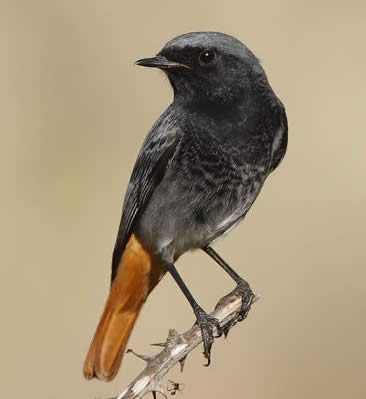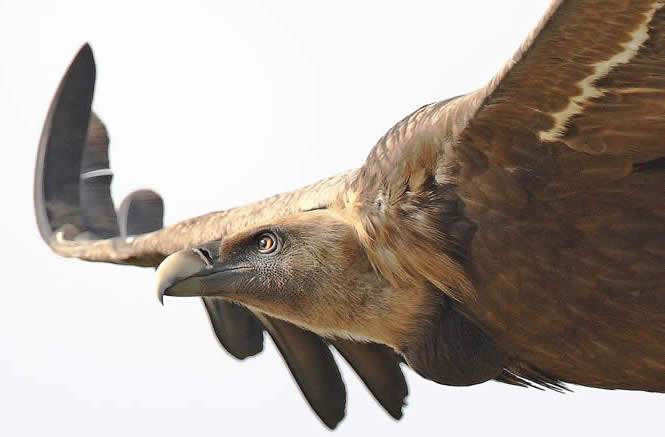Spanish Pyrenees 1 – 8 October 2024
Autumn at Berdún
A stunning landscape and a wealth of wildlife make the Spanish Pyrenees attractive in any season. Our usual holiday here is in spring, but we are ringing the changes by visiting in the autumn – still warm, but after the fierce heat of high summer – with a greater emphasis on the birds, given the season, but still enjoying other wildlife on show.
The resident birds of prey — griffon vultures and lammergeiers, for example — will be around, and the wintering population of red kites will be growing. Resident birds can include Sardinian and Dartford warblers, and the song of woodlarks is often a feature right through autumn and winter. Black redstarts are everywhere, especially in villages.
Wallcreepers are tricky to see when high in the Pyrenees in spring and summer. In autumn they descend and place like Biníes Gorge can be a good place to see them. On higher pastures we look for alpine choughs, water pipits and ring ouzel.
At this time of year migration through southern Europe is under way, though as always this varies according to the weather and, a little, to luck. A trickle of migrants could include swallows, warblers, wheatears and flycatchers.
Berdún itself – host to Honeyguide holidays for 30 years – is a charming, fortified village perched on a hilltop in the Pyrenean foothills. Our base is Casa Sarasa, where Peter Rich and Melanie Hallam offer a warm welcome and fine food. Peter knows the area well and we plan to add variety and local flavour with some historical or cultural interludes.
The Pyrenees may sound quite strenuous, but our itinerary is actually fairly relaxed. Anyone reasonably fit will have no trouble keeping up.

Our holiday base at Casa Sarasa in Berdún.
Birds
Those mentioned above plus golden eagle, crested lark, dipper, Cetti’s warbler, rock sparrow, spotless starling, chough, crag martin, blue rock thrush, crossbill, serin and many more.



Dartford warbler, black redstart, crag martin (Steve Fletcher).
Other wildlife
Mammals could include alpine marmot and isard – Pyrenean chamois – at the high tops, and red squirrel. For butterflies, there is a good chance of clouded yellow, Queen of Spain fritillary, wall brown and various graylings, such as rock and great banded, plus a range of other insects.
Flowers will be limited at this time of year but could include merendera and autumn lady's tresses.

Isards (Ivan Nethercoat)
Holiday details
Our trips, local and further afield, will be influenced by the weather, but we expect a mix of higher valleys such as Hecho, Aísa and Roncal, the area around the monastery at San Juan de la Peña, plus local exploration to the the rivers Veral and Aragón and in Biníes gorge.
Price: £1,750 per person in twin room for a full week (Tuesday to Tuesday).
Single room supplement: £180
Eleven rooms for the group + UK leader. En suite facilities, except two rooms that share a bathroom (already allocated for this holiday).
Flights: Scheduled Vueling flights London Gatwick to Bilbao.
01 October: VY6304 depart London Gatwick 08:30 arrive Bilbao 11:30.
08 October: VY6307 depart Bilbao 13:55 arrive Gatwick 14:45.
Deposit: £400
Group size: maximum of 14, though the mix of twins and singles in the group may affect numbers.
Vultures over Berdún.
Leaders
Chris Durdin is the driving force behind Honeyguide, running and leading holidays since his very first for Honeyguide in the Spanish Pyrenees in 1991. For many years he combined this with his work for the RSPB in Eastern England, often the Society’s spokesman, but has been concentrating on Honeyguide full-time since 2009. Chris is the co-author of a book about Norfolk’s cranes and leads regular walks on his local wildlife trust nature reserve, Norfolk Wildlife Trust's Thorpe Marshes. He’s also a barbershop singer. As a naturalist, Chris is an all rounder.
Peter Rich, with his Melanie, is our host at Casa Sarasa but also our regular co-leader in the Spanish Pyrenees. He has a wealth of local knowledge - places, people and wildlife.
Conservation project
SUPPORTING
|
The Sociedad Española de Ornitología (Spanish Ornithological Society) manages 1600 acres of steppe, one of the most threatened bird habitats both here in the Aragón region and in Europe. Dupont’s and lesser short-toed larks, pin-tailed and black-bellied sandgrouse and stone-curlews benefit from the establishment of this reserve at Belchite, near Zaragoza. |









